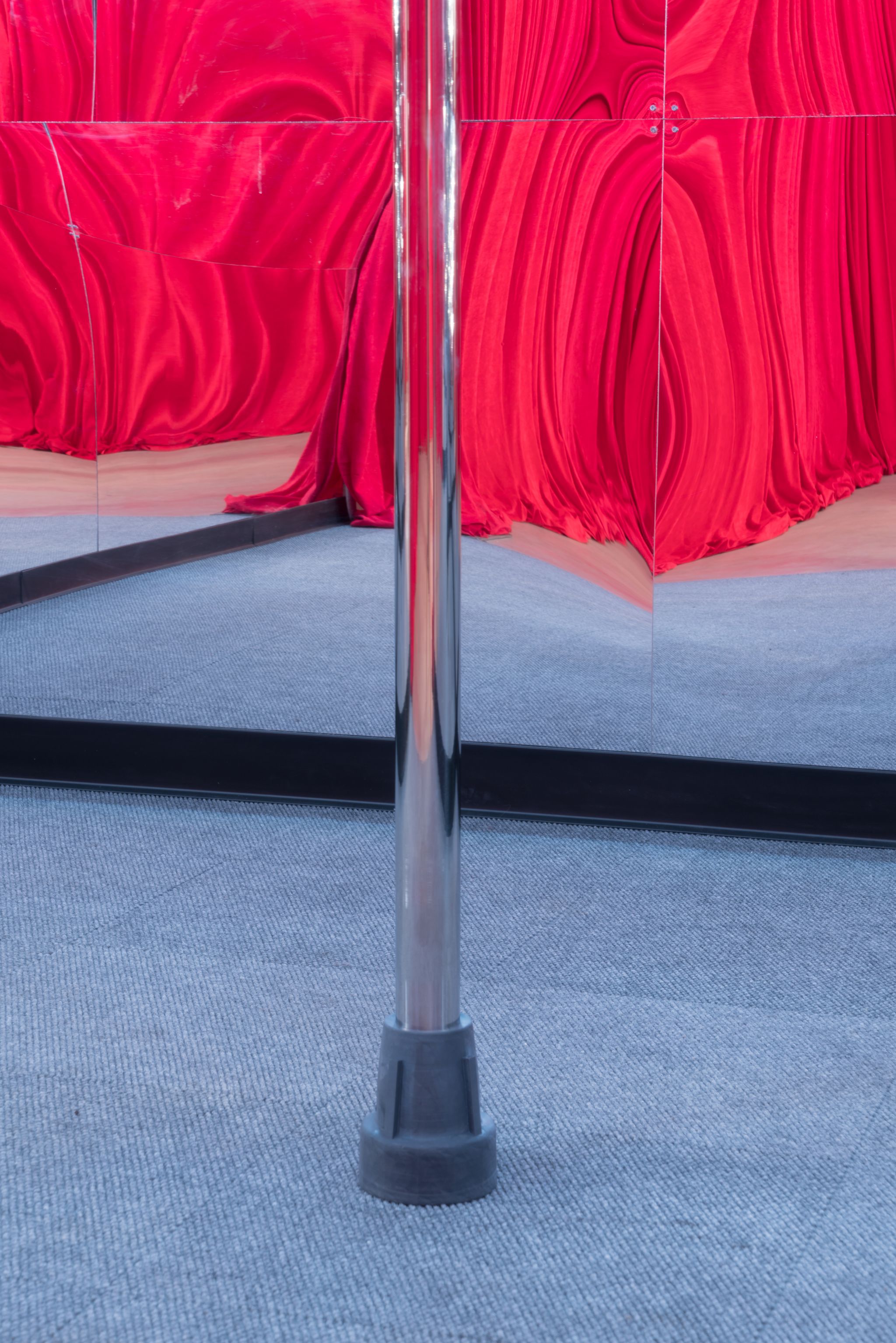Multi-platform and loosely defined, Amalia Ulman’s work constitutes a wide-ranging inquiry into the status of the self, notions of authenticity, the relationship between fact and fiction, and contemporary social and labor relations. While the artist is perhaps most well-known for her online conceptual performances, Dignity sees Ulman fully embrace immersive installation, a move which serves to highlight the poetic approach that has long undergirded her work.
read more
For Dignity, Ulman has fundamentally altered the gallery space, lining its walls with heavy, red drapes and replacing its ceiling with office tiles, which feature a cloud-like design toward the middle of the room. Below this, at the center of the gallery, Ulman has installed a single, cane-shaped stripper pole, anchored by a rubber tip. Alongside this scene is a large portrait of the artist done in the style of celebrity “fakes” circulated online, in which female celebrities’ smiling faces are adorned with male ejaculate through the use of Photoshop.
Posed by Ulman as “the aftermath” of her most recent performance entitled Privilege (2016), first presented at the 9th Berlin Biennale, Dignity continues and diffracts what may have been the thesis of the earlier work. Repeating several of the more theatrical motifs present in the previous performance, Dignity turns the gallery into a sort of cozy, distorted panopticon, where the visitor is both spectator and subject. Within the installation, she sometimes finds herself standing against the backdrop of Ulman’s red curtains, which recall cartoonish, cliched imaginings of the theater, and sometimes gazing up at Ulman’s likeness, ironic indignity deliberately fabricated through digital processes. No matter where you stand in Dignity, you’ll find yourself performing.
In both Privilege and the earlier Excellences & Perfections (2014), Ulman set out to interrogate this notion of performance, calling attention to the instability of the online self and its precarious relationship to “truth.” In 2014–well before our purported post-truth and post-fact era and well after postmodernism’s assessment of truth’s precarity– Ulman observed that, “When you repeat a lie, it becomes a truth, and a fake truth generated by images has more validity than a verbalized, genuine truth.” Dignity reflects these concerns as well, though unlike in the aforementioned performances, Ulman now de-centers herself, lessening her impulse to narrative. Instead, she scales up, her relentless self-interrogation becoming more gestural and aesthetic, recalling some of her early installations. Still, traces of her ongoing conceptual preoccupations and personal experiences can be found woven throughout Dignity; her fixation on celebrity and clichée are evident, as are biographical details, such as her foray into pole-dancing as physical therapy following an accident that left her with a permanent disability.
“In this world,” Ulman writes, “where everything is fiction, the best story wins.” In Dignity, the artist gently reminds us that all the world’s a stage. Everything is a delusion–personal, social, or political. We push on, swaddled in warm lies, the house lights so blinding that we can only see two feet in front of us. Here in the installation, Ulman offers the pole as a totem of her own personal fiction; she might not be able to run, but at least on the pole she can fly. Looking toward the ceiling, you see the sky, and the only way out is up. Climbing her pole, however, you quickly find yourself curving back downward, dangling over the pit you only just crawled out of. Is escape always the most powerful delusion, the fiction that wins out against them all?
Text: Aria Dean
Photos: James Fuentes, New York
Courtesy of the artist and James Fuentes, New York





